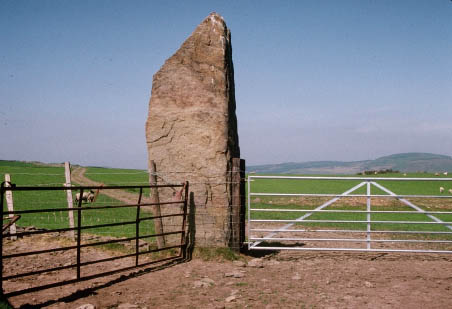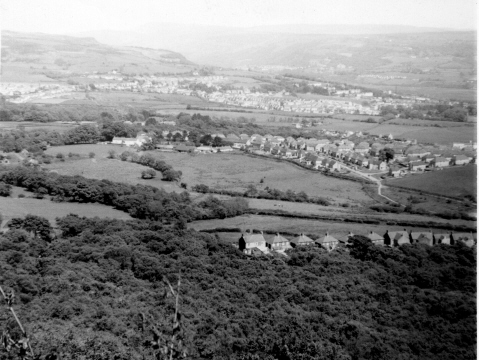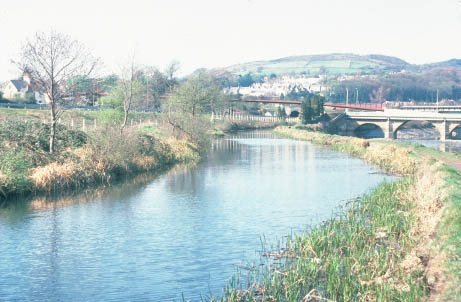
From the top of Drumau, we can look back across the parish. This view, taken in the 1960s, shows the houses of Penshannel in the foreground, with the village of Longford behind. Taillwyd, from this angle, is barely distinguishable beyond Longford. Beyond Taillwyd are fields that have now succumbed to more housing, as has some of the land between Penshannel and Longford. The village centre back is Caewern (Blaenhonddan parish) and in the distance, Tonna and Cefn Morfydd. Hold the mouse pointer over the picture to see annotations

It is now time to head back to Neath Abbey down Drumau Road and the Highlands.
As one travels down Drumau Road, one passes under a viaduct carrying the main
railway line from London to Swansea, via Neath. The first Great Western Railway
line (built by Brunel) had reached Neath in 1850 and soon extended to Swansea
by 1863. There was also the Vale of Neath railway -now closed - which ran up
to Merthyr and was closed to passengers in 1864 [sic
- but I think 1964]. Even collieries, like those at Waunceirch
and Bryncoch, once had a Dyffryn Clydach Railway line to Court Herbert. In addition
to these railway lines, the Dyffryn Clydach area was served by the Tennant Canal,
to be seen alongside the river. Running from Aberdulais to Swansea via Neath
it was privately built by industrialist George Tennant, at a cost of £20,000
under the direction of engineer William Kirkhouse.

It opened in 1824 and in the 1830's it was carrying coal at a rate of 90,000 tons a year, and it also had a passenger service. It carried coal, limestone and iron from the Dyffryn Clydach coal pits and the Ironworks. However, the coming of the railways in the 1840's led to its being used less and less until it fell into disuse by the 1920's. Today, alas, its only function is to supply water to industrial establishments like the Llandarcy oil refinery and B.P. Baglan Bay.
This has changed further since this text was written, following the closure of both the B.P. oil refinery at Llandarcy (1998) and the B.P. Chemicals site at Baglan Bay (2004).